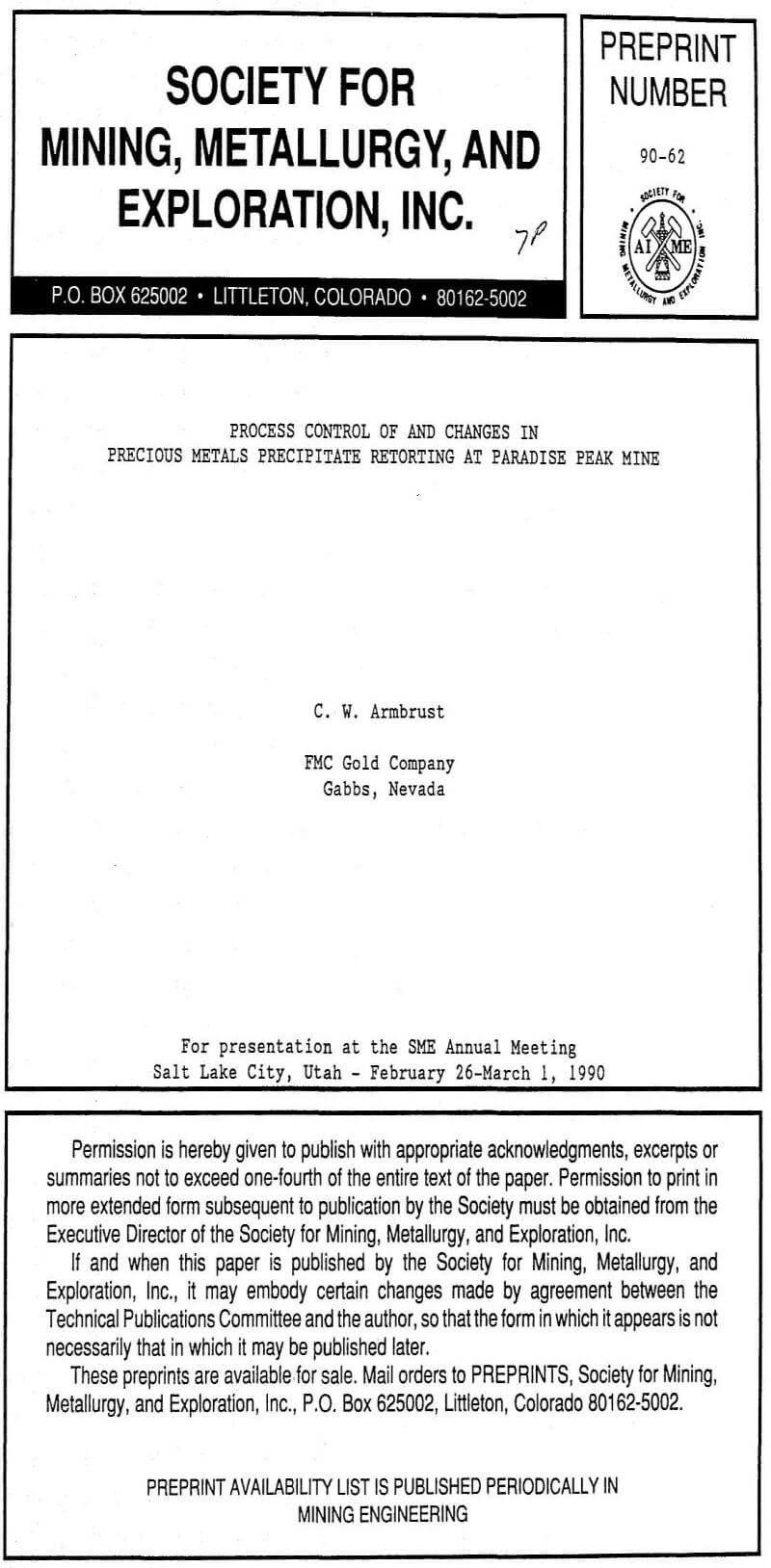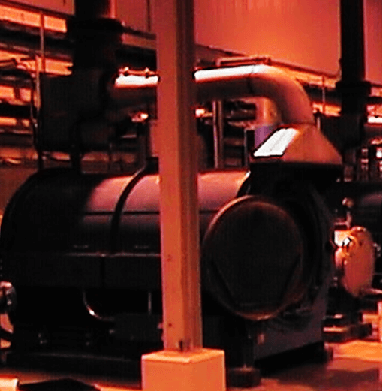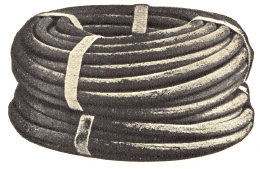Table of Contents
RETORT, Pyrex Glass—With ground-in Pyrex Stopper.
RETORT, Iron—Nevada pattern. Oval top with iron delivery pipe. Ground-in cover. This type offers a distinct advantage over the old type as it will hold more and there is space for expansion in the cover, preventing possibility of fracture from expansion. The cover is held in place by a heavy yoke, with a wrought iron wedge key, which will tighten and lock the cover in place with one blow of a hammer, and unlock as readily.
RETORT CONDENSER, Iron—With water jacket. If ordered, the inner tube is threaded to the retort outlet. Very useful in mercury retorting and minimizes danger of mercury poisoning.
RUBBER BULB-Of pure gum without valve for large pipettes etc.
RUBBER BULB-With two valves of white rubber, furnished with 5 inches of tubing.
RUBBER POLICEMEN, Angle Shape—With sealed end cut at angle, will fit 3/16 inch glass rod. Supplied without rods.
RUBBER POLICEMEN, Cone Shape—With vulcanite handle and flexible cone point.
RUBBER STOPPER—Of specially selected grade, containing a high percentage of pure rubber. Will stand up under the most trying laboratory conditions, without hardening.
RUBBER TUBING
RUBBER TUBING, White—Seamless tubing, smooth finish. Light wall. Suitable for ordinary laboratory purposes.
RUBBER TUBING, White—Cloth impression tubing, hand made. Heavy wall. Resistant to the action of laboratory fumes, and recommended for burner connections.
RUBBER TUBING, Thermofix, Black—Cloth impressed surface and medium wall. It is a high quality pure gum tubing; seamless, with low sulphur content and very durable for general laboratory purposes.
RUBBER TUBING, Thermofix, Red—Of high quality rubber with cloth impressed surface and medium wall. For general laboratory purposes.
RUBBER TUBING, Pressure, Black—Cloth impression tubing with especially heavy wall for pressure. Of good quality rubber gum, it is rigid and non-porous. Resistant to the action of fumes and very nearly acid proof.
RUBBER TUBING, Gooch—Black pure gum with thin walls for sealing Gooch crucibles to crucible holders.
Mercury Retort Equipment
The equipment as used at the Paradise Peak Mine was provided by Saracco of San Francisco, California. The equipment consists of a stainless steel cylindrical chamber in a horizontal orientation capable of holding four .07 cubic meter (2.5 cu/ft) trays of precipitate material stacked in sets of two.

The chamber is mounted inside an electrically heated furnace enclosure. Each retort furnace is equipped with 60 kv heating elements. The chamber entry end is capable of being sealed to alloy evacuation of atmosphere. At the opposite end gasses and vapors are removed via a water filled condenser arrangement.
The gasses are brought into the condenser vertically and discharged below the cooling water charge surface. The vacuum system is connected to the condenser discharge side through a carbon filled canister intended to reduce migration of undesirable vapors or contaminates (primarily mercury) to the vacuum receiver. The equipment was originally equipped with an automatic air purge venting into the retort chamber as one of the last steps in the “cool down” period. The vacuum pumps pulling from the receivers vent to atmosphere through an elevated exhaust stack. The original configuration of furnaces included four retort units of approximately .28 cubic meter (10 cu/ft) capacity each. Paradise Peak was originally equipped with four retort units giving a total capacity of about 1.13 cubic meters per day.
Mercury Retort Process

As precious metal precipitates are taken from the filter process they are delivered to the retort area at values that can be up to 50%+ moisture concentration. Typically the remainder is comprised of mercury, silver, gold, a small percentage of selenium, silicates and other miscellaneous materials.
From a filter arrangement the precipitates are dumped into .07 cubic meter (2.5 cu/ft) trays designed to fit into the retort chamber. Each retort is loaded with four trays (totaling .28 cubic meter) then closed and sealed in preparation of start of the batch process.
The automated batch process itself is started and controlled by a set point program system in the control equipment.
The entire cycle takes about twenty hours which allows a four hour window for unloading/loading activities.
When the retort program is started several events occur. The events are described as follows:
Vacuum
Vacuum systems start and are controlled to generally 30.5 to 45.7 cm (12 to 18″) Hg at the receiver. Vacuum valves are then opened to the condenser/retort evacuating any air and gasses through the carbon filter canister. The chamber evacuation continues throughout the entire cycle.
Heating
The heating elements are brought on line beginning the controlled heating of the precipitates under reduced atmospheric pressures. Originally the idea was to ramp the chamber to a preset two hour temperature soak near 121 Deg. C. The intent was to remove the water content without a sudden release of energy causing unnecessary splatter of precipitate materials. The heat rise of the ramping is generally controlled to about 1.5 to 2.5 deg. C./min.
Time
As time progresses (about three hours into the program) the temperature is again ramped up at a controlled rate until 732 Deg. C. is reached and held for approximately 8 (eight) hours.
Cooling
At the end of the heat/soak cycles dampers are opened, cooling fans started and a fresh air line is opened into the chamber to introduce cool fresh air (purge air) directly into the retort chamber. This begins temperature reduction to a point where material can be handled without chance to burn or injure personnel.
Mercury Condensation
Because of the reduced velocities the mercury vapors have a longer exposure time to the cooling water charge in the condenser thus less metal vapor is carried over beyond the condenser.
The condenser starting liquid (water) level charge has been raised and is controlled through an automated level control. This also leads to greater cooling time for the vapors introduced into the condenser.
Mercury sludges (waste materials) appear to be reduced in volume with improvements in process control and changes that have taken place.





